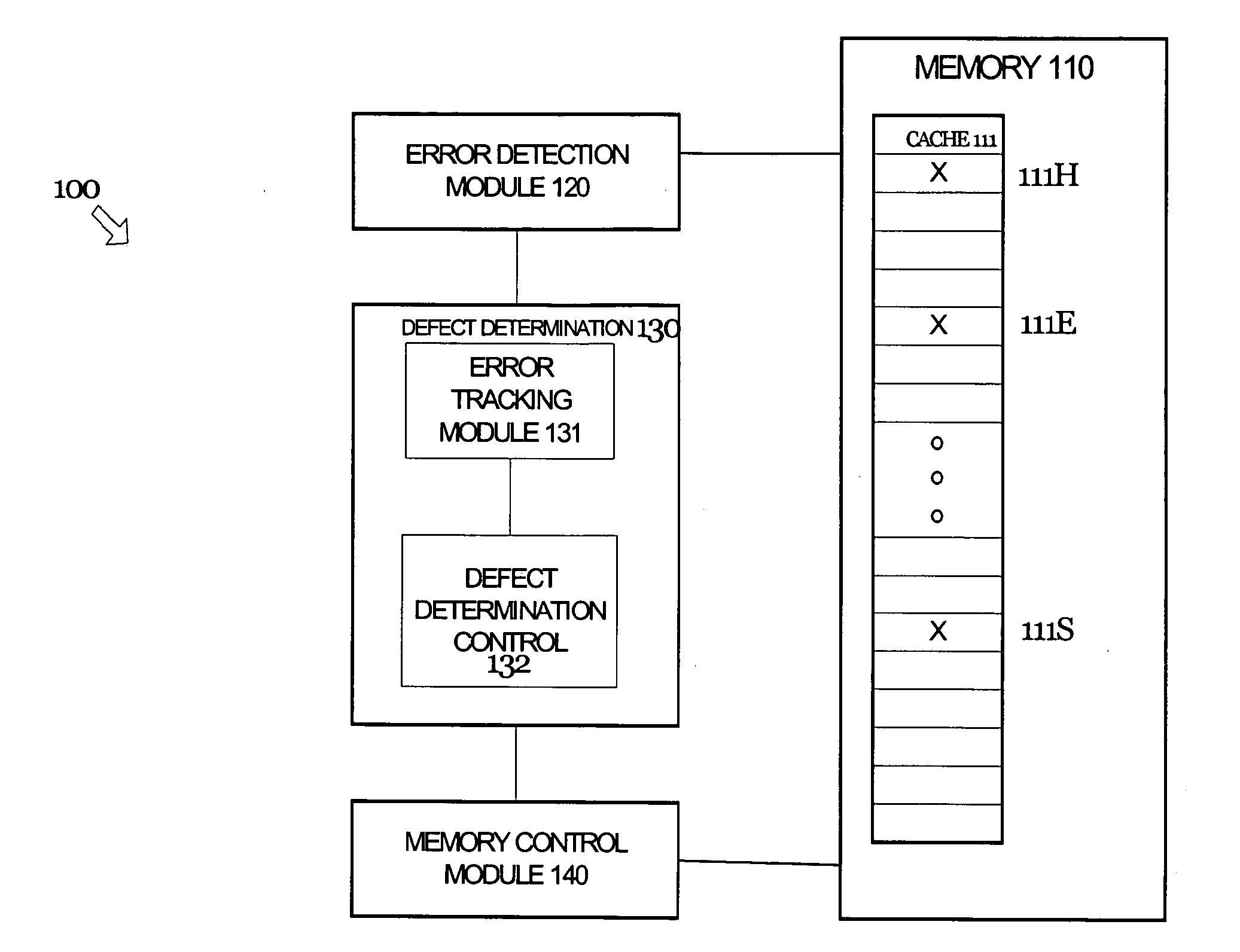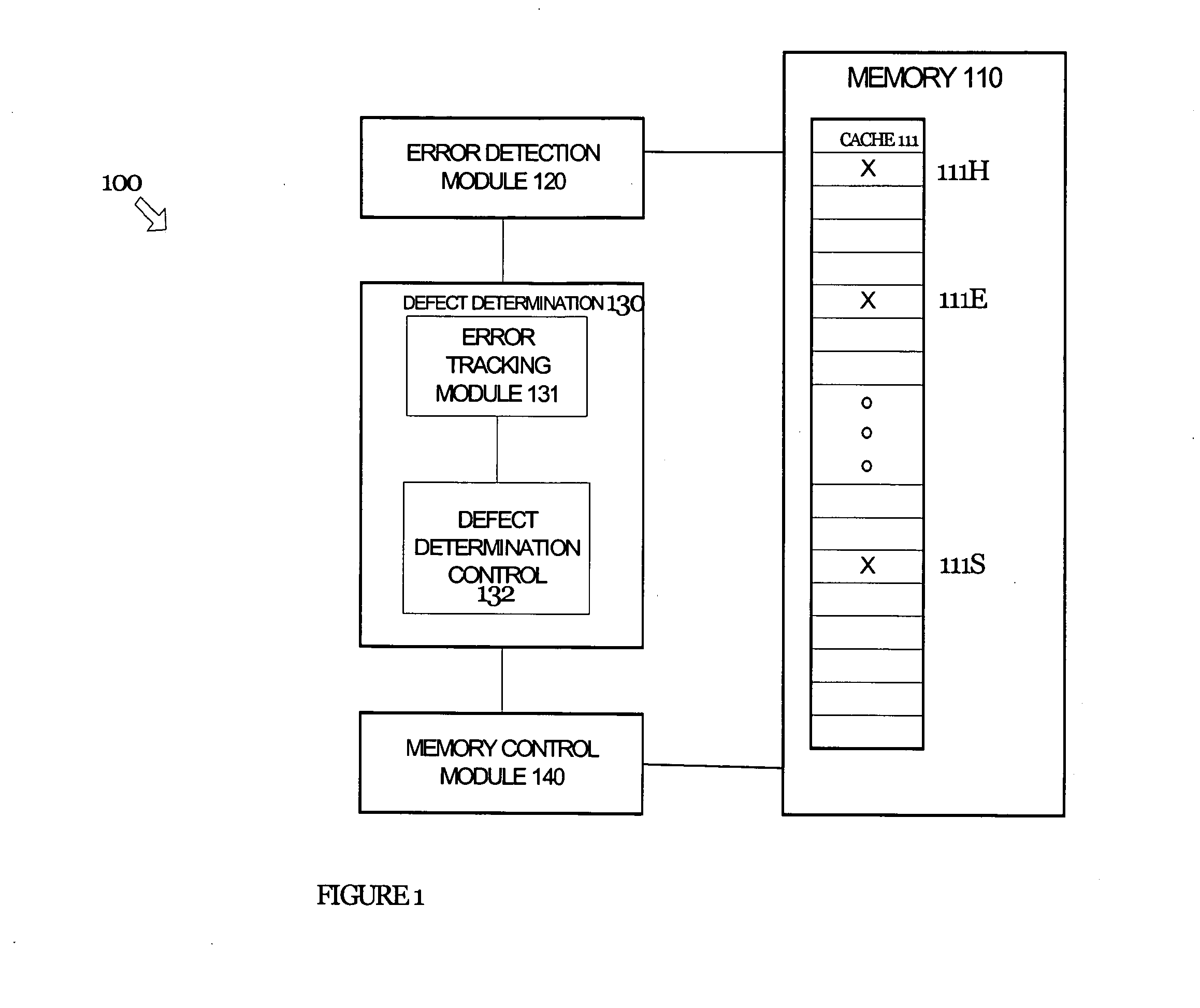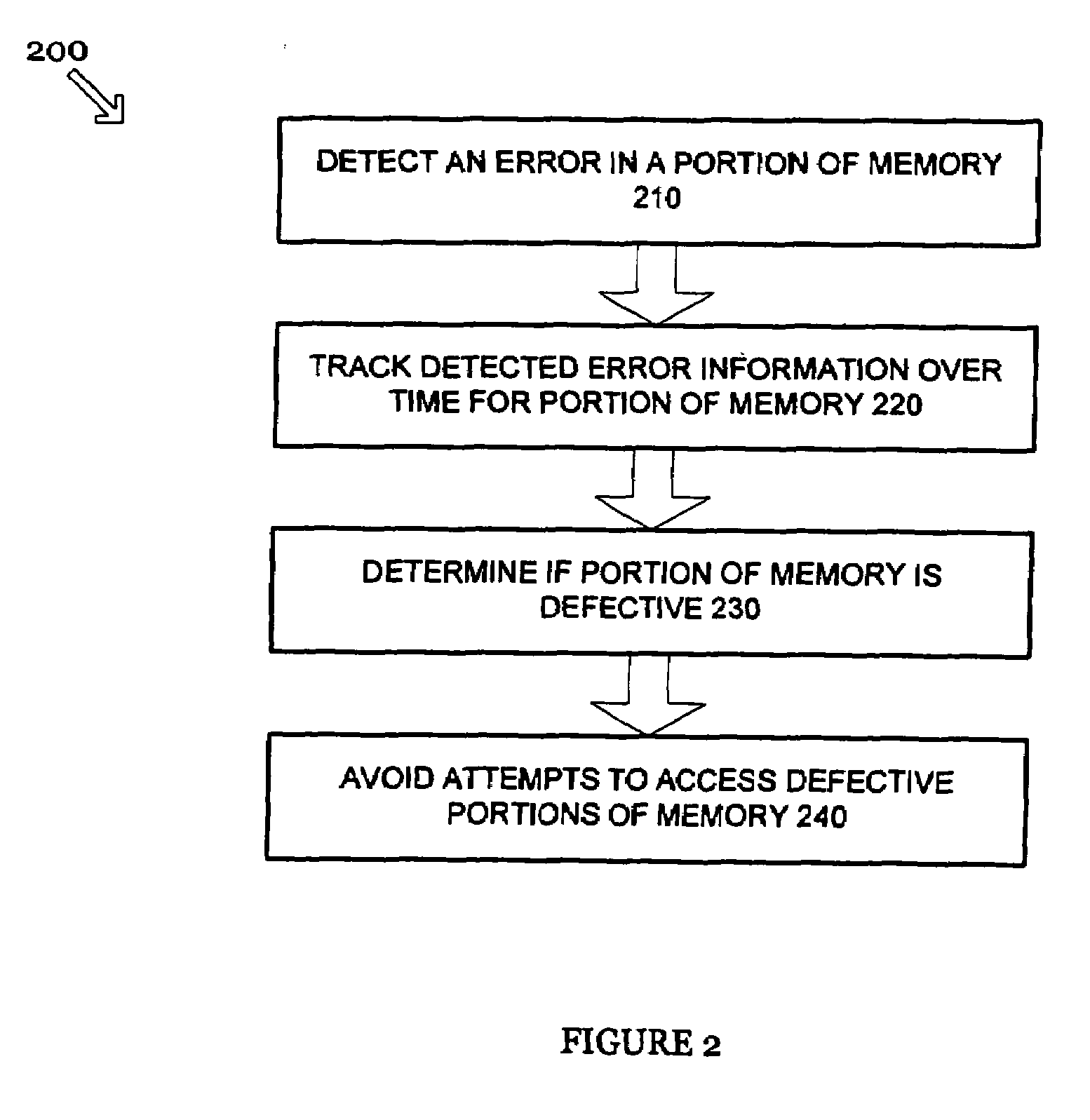Disabling portions of memory with defects
a technology of memory and defects, applied in the direction of memory adressing/allocation/relocation, redundant hardware error correction, instruments, etc., can solve the problems of hard errors that consistently fail, latent defects refer to defects that were not present, and memory errors from the memory point of view
- Summary
- Abstract
- Description
- Claims
- Application Information
AI Technical Summary
Benefits of technology
Problems solved by technology
Method used
Image
Examples
Embodiment Construction
[0011]In general, systems and methods are disclosed herein for identifying and avoiding attempts to access a defective portion of memory. That is, techniques are provided for detecting a defect in a portion of memory and dynamically avoiding future attempts to access the defective portion of memory. More specifically, the following techniques detect and avoid both hard and erratic errors. The embodiments described herein are described in the context of a cache memory in a microprocessor, but are not so limited. The same techniques and teachings of the present invention may easily be applied to other types of circuits or semiconductor devices containing memory that may benefit from reliable access to memory. In addition, the methods of the present invention may be implemented in software or hardware as one of ordinary skill in the art will appreciate.
[0012]In the following description, for purposes of explanation, numerous specific details are set forth in order to provide a thorough...
PUM
 Login to View More
Login to View More Abstract
Description
Claims
Application Information
 Login to View More
Login to View More - R&D
- Intellectual Property
- Life Sciences
- Materials
- Tech Scout
- Unparalleled Data Quality
- Higher Quality Content
- 60% Fewer Hallucinations
Browse by: Latest US Patents, China's latest patents, Technical Efficacy Thesaurus, Application Domain, Technology Topic, Popular Technical Reports.
© 2025 PatSnap. All rights reserved.Legal|Privacy policy|Modern Slavery Act Transparency Statement|Sitemap|About US| Contact US: help@patsnap.com



